Every other month, our 5 to Try series showcases five examples of stellar wines from varying wine styles, grapes, and Germany’s 13 winegrowing regions. With this year’s harvest well underway in Germany, this month’s list is a light dive into a specific vintage of German wine – 2020!
The 2020 vintage is recognized for producing high-quality wines across all 13 German winegrowing regions. Eight million six-hundred thousand hectoliters were produced in total, slightly above the harvest volume of 2019 and 2% below the ten-year average. After a warm and sunny spring, vines flowered earlier than usual, followed by a hot and dry summer that jump-started harvest in late August and ended within 3-4 weeks for many winemakers. Finally, the vintage was crowned with a successful ice wine (Eiswein) harvest, with several regions experiencing the required below-freezing temperatures on November 30. Overall, grapes were very ripe and healthy, predicting the excellent quality of wines now widely available in the U.S. and other export markets.
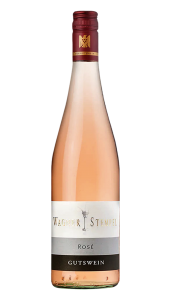 1. 2020 Wagner-Stempel Estate Rosé, Rheinhessen
1. 2020 Wagner-Stempel Estate Rosé, Rheinhessen
This rosé hails from Weingut Wagner-Stempel in Rheinhessen, an estate with a history that has expanded over nine generations. The blend of Frühburgunder (also known as Pinot Noir Précoce), Merlot, St. Laurent, and Spätburgunder (Pinot Noir) has a lively acidity with notes of red currant and raspberries.
Lack of precipitation was one of the main challenges of the 2020 vintage for Rheinhessen, but Germany’s largest wine region still produced an estimated 2.45 million hectoliters from healthy grapes, resulting in aromatic wines with sufficient acidity. The weather was particularly favorable to red varieties, like those in this elegant dry rosé.
Find Near You: Wine-Searcher.com
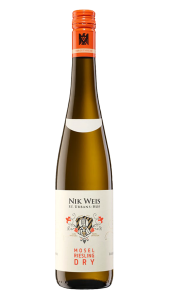
2. 2020 St. Urbans-Hof Nik Weis Estate Riesling Dry, Mosel
The 2020 St. Urbans-Hof Nik Weis Estate Dry Riesling features a stony minerality with lime, green apple, and white peach flavors, and even a slight spiciness. This light and crisp Riesling is characteristic of the Mosel, which experienced a prolonged drought for the 3rd year in a row in 2020, with very different yields and qualities within the region. One advantage of the dry season was that Mosel winemakers had few problems with disease, and most winemakers were satisfied. Conditions were especially good for Kabinett-style wines.
Find Near You: Wine-Searcher.com
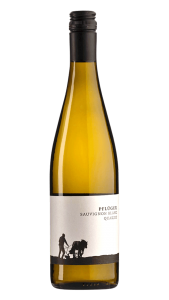
3. 2020 Pflüger ‘Vom Quarzit’ Sauvignon Blanc, Pfalz
This Sauvignon Blanc comes from winemaker Alex Pflüger, who biodynamically cultivates 40 hectares of vineyards in the Pfalz. This particular wine is a refreshing and delicate young white with notes of kiwi and citrus fruits.
The Pflüger estate reported excellent conditions for the 2020 vintage thanks to warm and dry summer weather that extended into September. Winemakers throughout the Pfalz region had a pleasant spring in which vegetation developed at mild temperatures without frost damage, though a heat wave in the summer caused sun damage to some grapes. Nonetheless, winemakers brought in a harvest of healthy grapes 6% above the average yield for the past ten years.
Find Near You: Wine-Searcher.com
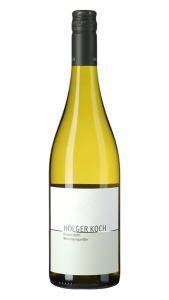
4. 2020 Holger Koch Kaiserstuhl Weissburgunder, Baden
The wines of Holger Koch are classified by the altitude of vineyards from which they hail. The Kaiserstuhl wines, including the 2020 Holger Koch Kaiserstuhl Weissburgunder (aka Pinot Blanc), come from loess soils on the lowest side of the hill with the flattest land and the least wind exposure. This is a racy, mineral-driven, and extremely food-friendly Weissburgunder (Pinot Blanc) that is aged for at least 3 months in wooden barrels.
The 2020 harvest was earlier than ever in Baden, one of Germany’s most southerly wine regions. Optimal weather with many cool summer nights was an advantage for the Pinot varieties, and the harvest was comparatively easy with no problems of disease in the vineyard. However, the drought experienced throughout Germany’s wine regions reduced yields an estimated 11% below the previous year.
Find Near You: Wine-Searcher.com
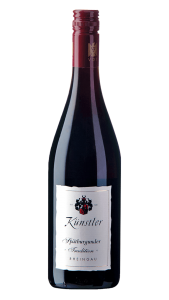
5. 2020 Künstler Pinot Noir ‘Tradition’ Dry, Rheingau
Weingut Künstler sits in the famous village of Hochheim, most well-known for the inspiration behind the 17th century British term “Hock.” The winery sits between the Rhine and Main Rivers, creating a more humid climate for grape growth. The 2020 Künstler Pinot Noir ‘Tradition’ Dry features notes of cherry and is a lighter-bodied Spätburgunder (Pinot Noir).
The Rheingau was one of the few regions in Germany with little challenges during the 2020 harvest, producing yields an estimated 20% above the long-term average. Autumn passed calmly with winemakers working under ideal weather conditions.
Find Near You: Wine-Searcher.com
Plan on trying these wines? Let us know what you’re drinking by tagging @GermanWineUSA!
Facebook | Instagram | Twitter
